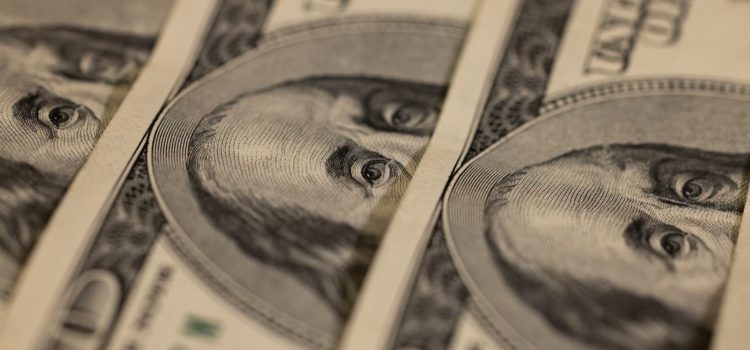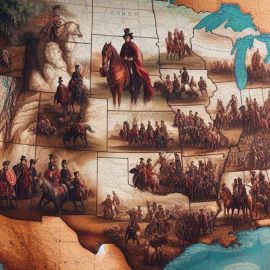
Do you know how to spot a counterfeit bill? How common are they?
Counterfeit bills can be very convincing, and it’s challenging to spot a fake. Counterfeiting may cost the U.S. economy over $200 billion each year. And, it’s not just businesses that are suffering. Ordinary people can also fall victim to fake currency when they pay or get change.
Keep reading to learn how to identify fake currency to protect yourself and your business.
Look and Feel of Genuine Currency
To spot counterfeit bills, it’s essential to understand the physical characteristics of genuine currency. For example, U.S. currency has a distinct look and feel that is difficult to replicate. Therefore, studying real money can help you identify fake bills with ease.
The physical features of genuine currency include paper texture, raised printing, and fine-line printing. The paper used for actual cash is made of a unique blend of cotton and linen fibers, which gives it a distinctive feel. The printing process used for genuine currency is also impressive, with raised printing that is easy to feel when you run your finger over it. Additionally, the actual cash has fine-line printing, which is difficult to replicate with a photocopier or printer.
Importance of Studying Genuine Currency
Studying genuine currency is crucial to being able to spot fake bills. By understanding the physical characteristics of actual money, you can quickly identify any discrepancies when examining a suspect bill. Additionally, if you handle cash frequently, studying genuine currency can help you become more familiar with the bills you regularly take, making it easier to spot any fake bills that come your way.
Watermark and Security Thread
Watermarks and security threads are two essential security features of U.S. currency that help prevent counterfeiting.
Watermarks are images embedded into the paper of genuine currency during the manufacturing process. These images can only be seen when held up to the light. To identify a watermark, hold the bill up to the light and look for a faint idea of the portrait featured on the account. The watermark should be visible on both sides of the bill, and the image should be crisp and clear.
Security threads are thin plastic strips embedded into the paper of genuine currency. The security thread runs vertically through the bill and is visible when held up to the light. The security thread also has text printed on it, identifying the bill’s denomination. The security thread is an important security feature because it is difficult to replicate accurately.
How to Spot a Security Threat
To spot a security thread, hold the bill up to the light and look for a thin strip running vertically through the bill. The security thread will be visible on both sides of the bill and glow a specific color under UV light, depending on the bill’s denomination.
By learning how to identify watermarks and security threads, you can quickly and easily identify fake bills that lack these features or have poorly replicated versions.
Color-Shifting Ink and Microprinting
Color-shifting ink and microprinting are two additional security features incorporated into U.S. currency to prevent counterfeiting.
Color-Shifting Ink
Color-shifting ink appears to change color when viewed from different angles. This ink is used for the denomination numeral on the bottom right corner of the front of genuine currency. The color shift results from the ink containing reflective material that changes color as it reflects light. To identify real cash with color-shifting ink, tilt the bill and observe the color of the denomination numeral, which should shift from copper to green or gold.
Microprinting
Microprinting is tiny text printed on genuine currency and is difficult to replicate accurately. Microprinting is used on various money parts, including the border, serial numbers, and text. The text is so tiny that it appears as a solid line to the naked eye, but when magnified, it becomes legible. To identify micro printing, use a magnifying glass or a microscope to examine the bill closely.
By familiarizing yourself with these security features, you can easily spot fake bills that lack these features or have poorly replicated versions. Genuine currency’s color-shifting ink and microprinting are challenging to reproduce accurately, so any account that lacks these features or has incorrectly copied versions of them is likely to be fake.
Portrait and Border
The portrait and border of genuine U.S. currency are designed with several features to prevent counterfeiting. To spot counterfeit bills, it’s essential to identify the unique features of the portrait and the border.
The portrait on genuine currency is engraved and has a distinctive texture. The picture should also have sharp lines proportionate to the bill’s denomination. Additionally, the image should be lifelike and have fine details such as hairlines, facial features, and wrinkles.
The border of genuine currency also has several unique features that are difficult to replicate. For example, the edge should be clear and unbroken, with sharp, distinct lines. Additionally, the border should have intricate details that are difficult to copy accurately, such as microprinting and fine-line patterns.
Serial Numbers
The serial number on a bill is an important feature that helps to identify its authenticity. The serial number is a unique combination of numbers and letters printed on each account, and no two genuine bills have the same serial number.
To identify counterfeit bills based on their serial numbers, look for serial numbers that are not correctly aligned, contain unusual characters or symbols, or are printed in an incorrect font. Additionally, if the serial numbers on a group of bills are identical or sequential, this is a red flag that they may be counterfeit.
To check the authenticity of a bill’s serial number, compare it to the serial numbers of other bills of the same denomination. Open accounts will have unique serial numbers printed in the same style and font.
Text and Paper Quality
The text and paper quality of genuine currency are both essential features to look for when spotting counterfeit bills. By carefully examining the text and typography on a bill, you can quickly identify fake accounts with blurry or smudged characters, inconsistent typography, or poorly aligned text.
Additionally, by feeling the texture of the paper and examining its color and consistency, you can quickly identify counterfeit bills that lack the unique feel and texture of genuine currency paper.
Identifying Genuine Text and Typography
The text on the genuine currency has specific characteristics that are difficult to replicate accurately, making it an important feature to look for when trying to spot counterfeit bills. The text on genuine currency is sharp, clear, and legible, with no blurry or smudged characters. Additionally, the typography used on real money is consistent and has a uniform style and font.
To identify fake bills based on their text, look for blurry or smudged characters, inconsistent typography, or text not correctly aligned with the rest of the bill.
What to Look for in Genuine Currency Paper Quality
Genuine currency paper has a unique texture and feels that it is difficult to replicate. The report is made from a blend of cotton and linen fibers and has a distinctively crisp feel. Additionally, genuine currency paper has a consistent texture and color throughout the bill.
To identify counterfeit bills based on their paper quality, look for paper that feels too smooth or too rough, has a different texture or color than genuine currency, or lacks the unique feel of natural currency paper.
The Counterfeit Detection Pen
A counterfeit detection pen is a popular tool for detecting fake bills. However, reacting with the starch in genuine currency paper creates a dark mark. Limitations include its effectiveness on altered bills.
How Do Counterfeit Pens Work?
A counterfeit detection pen is a popular tool for quickly detecting fake bills. It uses a special ink that reacts with the starch in genuine currency paper, creating a dark mark. This ink does not react with the starch in counterfeit bills, which is how counterfeit pens work.
To use the counterfeit detection pen, make a small mark on the bill and wait for the ink to dry. If the spot is dark, the account is likely genuine. If the spot is light or nonexistent, the bill may be counterfeit.
While the counterfeit detection pen can be helpful, it has some limitations. For example, it may not work on bills printed on different paper types or altered invoices. Therefore, it’s essential to use multiple methods to detect counterfeit bills.
Limitations of the Counterfeit Detection Pen
While the counterfeit detection pen can be helpful, it has some limitations. The cell is designed to detect bills printed on standard currency paper, but it may not work on bills printed on different types of paper or altered in some way.
Some counterfeiters have found ways to replicate the starch content of genuine currency paper, making it difficult for the pen to detect fake bills.
Conclusion
In this article, we’ve discussed several ways to spot counterfeit bills, including:
- Examining the physical characteristics of genuine currency
- Identifying watermarks and security threads
- Checking for color-shifting ink and microprinting
- Reading the portrait and border
- Identifying serial numbers
- Reading the text and paper quality
- Using a counterfeit detection pen
By being familiar with these features of a genuine currency, you’ll be better equipped to identify counterfeit bills.
Remain Vigilant!
Counterfeit bills can have a significant impact on both individuals and businesses. By staying vigilant and examining every bill before accepting them, you can help protect yourself and others from the harmful effects of counterfeit currency.
Remember, if you ever suspect a bill is counterfeit, do not accept it and contact the authorities immediately.
Stay alert, stay informed, and stay safe!
Alex Reichmann is the CEO of iTestCash, where he provides retailers around the U.S. and abroad with security and money handling products.






